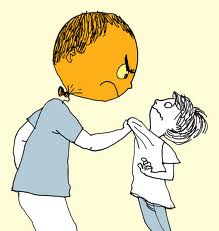 Angela Hanners, Communication Director of Accredited Online Schools recently found our list of bullying resources on the wiki: http://soobahkdo.editme.com/Bullies
Angela Hanners, Communication Director of Accredited Online Schools recently found our list of bullying resources on the wiki: http://soobahkdo.editme.com/Bullies
Her company has recently completed an expert-driven guide to bullying awareness and she asked if we would consider adding it to our bullying resources page. You can check out the guide that Accredited Schools Online developed here:
Angela reports that:
“Cyber and physical bullying are growing and undeniable problems, and like so many misunderstood issues, education and awareness are the best prevention tools we have. This guidebook's purpose is to do just that: educate students of all ages and their families about what bullying is, why it happens, and what they can do to prevent it.
Key elements of the guide include:
- – An in-depth look at specific types of bullying, including cyberbullying, sexual bullying, physical bullying and more
- – An extensive Q&A with two leading experts in psychology and psychiatry
- – Bullying prevention techniques for students, parents, teachers and administrators
Two experts in the field were essential in our crafting of this guide. Dr. Ben Michaelis is a clinical psychologist and regular guest/contributor on Huffington Post, Fox News, and the Today Show. Dr. Steven C. Schlozman is an Assistant Professor of Psychiatry at Harvard Medical School and also serves as the Associate Director of the Clay Center for Young Health Minds. Their combined expertise was an invaluable asset, allowing us to get a uniquely in-depth look at the truth of bullying.“
In addition to all that Moo Duk Kwan® Certified Studios, Instructors and members already do to empower individuals to protect themselves and others from bullying, she asked if we would also consider helping spread bullying awareness and prevention by adding a link to her company's guide on our website. If you find it informative and educational, please consider sharing.



